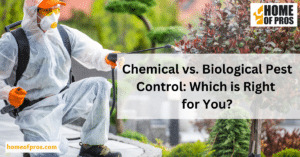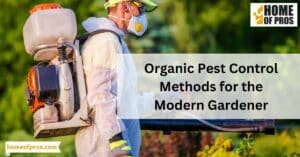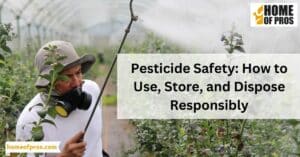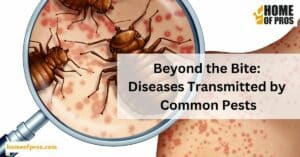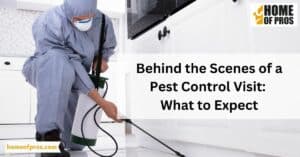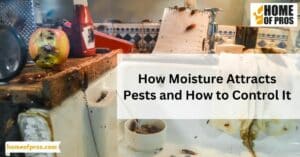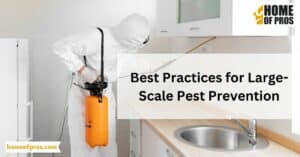Ant infestations can wreak havoc in your home, but with the right approach, you can regain control. Early identification is crucial, so watch for ant trails and nests. Treatments range from DIY solutions to professional pest control services. Remember to target specific ant species and address outdoor nests.
In this blog post, we’ll discuss how to prevent ant infestations as well as what to do if one should occur. We will also explore the various types of ant infestations and the treatments available to help you get rid of them.
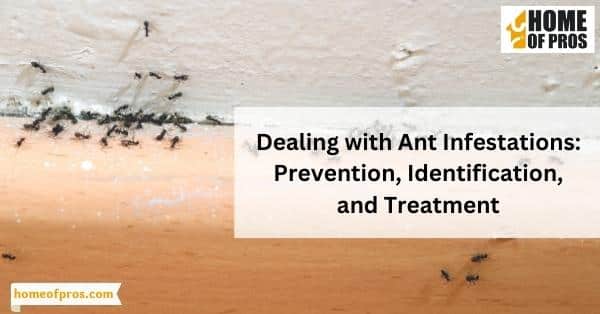
What is Ant Infestations?
Ant infestations occur when a large number of ants invade a property or building, causing damage and potential health risks. Ants are social insects that live in large colonies, and they have a variety of species that exhibit different behaviors depending on their environment.
Some ants are attracted to food, while others build nests in wood or soil. Ant infestations can be difficult to control, as ants can quickly reproduce and spread throughout a property. It’s important to take immediate action to prevent ants from infesting your home or business.
Understanding the behavior of ants and taking preventative measures can help protect your property from the damage and health risks associated with ant infestations.
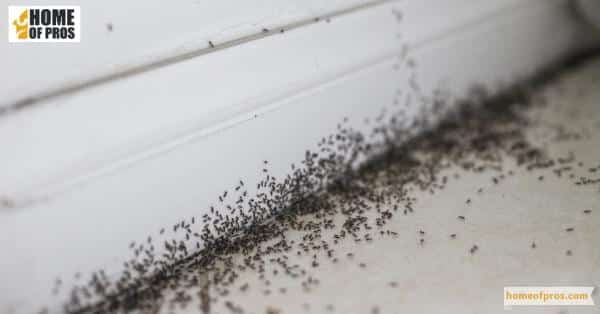
Reasons for Ant Infestation
Ant infestations can be a nuisance in homes and businesses. There are several reasons why ants might invade your space. Understanding these causes can help you prevent infestations and take appropriate action if they do occur.
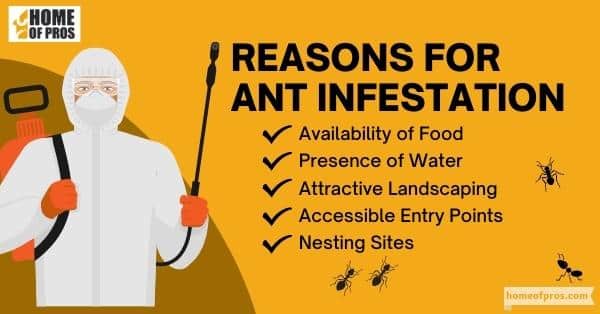
- Availability of Food: Ants are attracted to food sources, particularly sweet and sugary foods. Leaving spills or crumbs on surfaces can attract ants to your home or business.
- Presence of Water: Just like humans, ants need water to survive. Ants will seek out areas with moisture and water sources. Leaky pipes, standing water, or high humidity can all create an attractive environment for ants.
- Attractive Landscaping: If your landscaping includes plants that produce nectar or honeydew, this can attract ants. Trees, shrubs, and flowers that provide a food source for aphids can lead to ant infestations.
- Accessible Entry Points: Ants are tiny creatures and can easily enter through small cracks and crevices. If your home or business has easy access points, such as gaps around doors or windows, this can make it easier for ants to infiltrate.
- Nesting Sites: Ants will nest in a variety of locations, including inside walls or under floors. If the conditions are right, an ant colony can thrive and expand quickly.
Prevention Methods
Practicing Good Housekeeping Habits
Practicing good housekeeping habits is crucial for maintaining a clean and safe living environment. It involves a range of simple but effective daily habits that can minimize the risk of accidents, prevent the spread of germs, and ensure that your home stays clutter-free.
Adopting proper housekeeping practices can cover everything from sorting and storing your belongings in a systematic manner, to regularly cleaning and disinfecting high-touch surfaces like doorknobs and light switches. By making these habits a part of your routine, you can ensure that your home is not only a comfortable and pleasant place to live in, but also a healthy one.

Regularly Checking for Potential Entry Points
Preventing potential entry points is an essential part of maintaining a secure environment. Regularly checking for these entry points can help to identify and mitigate any vulnerabilities or weaknesses in your security system.
By scrutinizing entrances, windows, and other points of access, you can better understand where your system may be susceptible to intrusion. Once identified, appropriate prevention methods can be implemented to prevent unauthorized entry.
From installing stronger security doors to upgrading alarm systems, there are many options available to increase protection and peace of mind. Remember that being proactive is key in safeguarding your assets, and regularly checking for potential entry points is an important step in maintaining security.
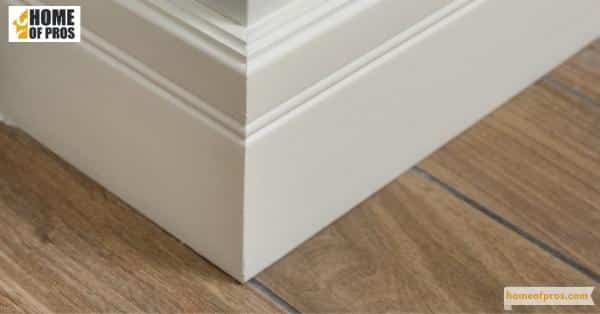
Sealing Food Items Properly
Properly sealing food items is an essential practice for maintaining their freshness and preventing contamination. Whether you’re at home, packing snacks for a road trip, or preparing for a camping trip, knowing how to seal your food properly is key to keeping it safe and delicious.
One of the easiest methods of sealing food is by using airtight containers or resealable bags. These options help to keep air and moisture out, which can lead to spoilage and bacterial growth. Additionally, using vacuum sealers can further extend the shelf life of food items.
By taking the necessary precautions and sealing your food items correctly, you can have peace of mind knowing that your food is safe and will remain fresh for as long as possible.

Identification and Diagnosis of Ant Infestations
Distinguishing Common Species of Ants
Ants are a common nuisance in many homes and businesses. It’s important to be able to distinguish between different species of ants in order to correctly diagnose an ant infestation and apply the appropriate treatment.
There are over 12,000 known species of ants, but some of the most common include the black carpenter ant, the pavement ant, and the odorous house ant. Black carpenter ants are typically the largest of the three and can cause structural damage to buildings. Pavement ants are typically small and brown, and are often found in cracks in pavement or concrete.
Odorous house ants, as their name suggests, often emit a foul odor and are attracted to sugary foods. Identifying the type of ant present in an infestation can help professionals determine the best course of action for treatment.
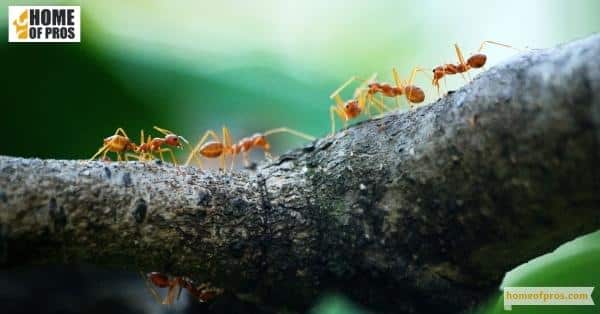
Identifying Signs of an Infestation
Ant infestations can be a nuisance and identifying their presence is essential for effective treatment. Signs of an infestation can include the appearance of ants, particularly in large numbers and in areas where food is present.
Additionally, trails of small particles or debris, such as small pieces of food, can indicate that ants are present. Ant nests can also be found in soil or along foundations and can be identified by small entrances with piles of displaced soil nearby. Effective treatment of an ant infestation requires proper identification and diagnosis.
A professional pest control service can provide effective solutions for the treatment of ant infestations, including identifying the type of ant and the most appropriate treatment method. It’s important to address ant infestations promptly to prevent further damage and potential health concerns.
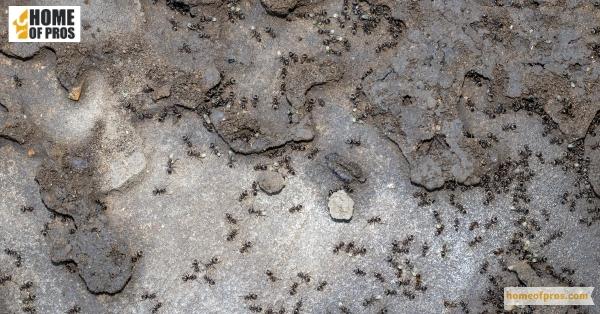
Seeking Professional Help
Ant infestations can be a nuisance in both residential and commercial settings. They can cause damage to property, contaminate food, and even pose health risks. If you suspect an ant infestation, it is important to seek professional help for identification and diagnosis.
Professional exterminators have the expertise and knowledge to identify the type of ant species present, locate the source of the infestation, and provide effective treatment options tailored to your unique situation. Don’t let an ant infestation go unchecked – seek professional help to protect your property and ensure your peace of mind.

Treatment Methods for Ant Infestations
Chemical Treatments
Ants are no strangers to most homeowners. They can march into homes in a seemingly endless line, causing quite the nuisance. While there are several DIY methods to control an ant infestation, sometimes chemical treatments are necessary for more severe cases.
Chemical treatments are the most effective way to get rid of ants and prevent them from returning. They work by targeting the specific pests and attacking their central nervous system, leading to their demise.
Some of the most commonly used chemical treatments include sprays, baits, and dust, and they are applied in targeted areas around the home where ants are known to frequent. It’s crucial to follow the instructions precisely when using any chemical treatment to ensure personal safety and efficacy.
Seeking professional help when attempting chemical treatments is recommended to get the best results in destroying the colony.

Non-Chemical Treatments
Ant infestations can be a nightmare for homeowners. While chemical treatments may seem like a quick fix, they can have negative effects on both your health and the environment. Luckily, there are non-chemical treatment options that can be just as effective.
One option is to use bait stations filled with a mixture of sugar and boric acid, which is toxic to ants but safe for humans and pets. Another option is to create a barrier of diatomaceous earth, a natural substance made up of the fossilized remains of tiny aquatic organisms.
When ants come into contact with the diatomaceous earth, it dehydrates them and kills them. While these treatments may take longer to see results, they are a safer and more sustainable option for treating ant infestations.

In Conclusion
Ant infestations can be a serious problem in both residential and commercial properties. With the correct identification, diagnosis, and treatment methods, however, you can effectively manage ant infestations and protect your home or business from damage and health risks.


